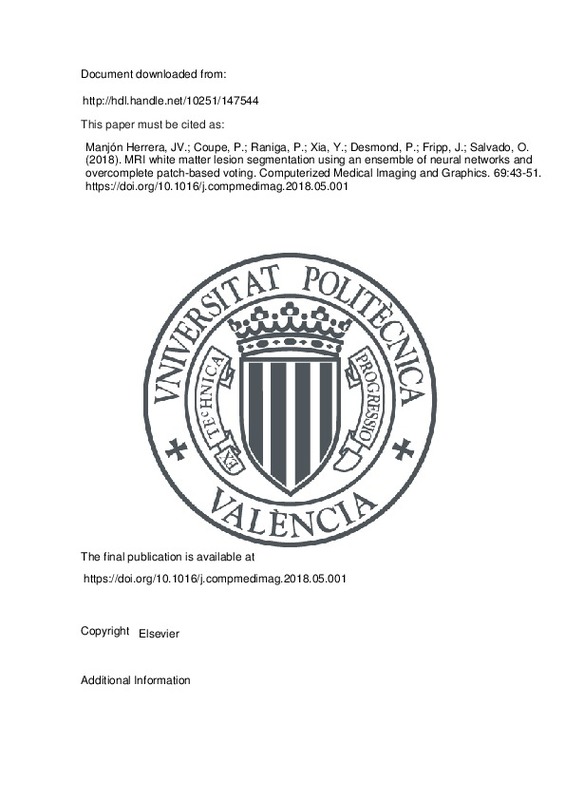JavaScript is disabled for your browser. Some features of this site may not work without it.
Buscar en RiuNet
Listar
Mi cuenta
Estadísticas
Ayuda RiuNet
Admin. UPV
MRI white matter lesion segmentation using an ensemble of neural networks and overcomplete patch-based voting
Mostrar el registro completo del ítem
Manjón Herrera, JV.; Coupe, P.; Raniga, P.; Xia, Y.; Desmond, P.; Fripp, J.; Salvado, O. (2018). MRI white matter lesion segmentation using an ensemble of neural networks and overcomplete patch-based voting. Computerized Medical Imaging and Graphics. 69:43-51. https://doi.org/10.1016/j.compmedimag.2018.05.001
Por favor, use este identificador para citar o enlazar este ítem: http://hdl.handle.net/10251/147544
Ficheros en el ítem
Metadatos del ítem
| Título: | MRI white matter lesion segmentation using an ensemble of neural networks and overcomplete patch-based voting | |
| Autor: | Coupe, Pierrick Raniga, Parnesh Xia, Ying Desmond, Patricia Fripp, Jurgen Salvado, Olivier | |
| Entidad UPV: |
|
|
| Fecha difusión: |
|
|
| Resumen: |
[EN] Accurate quantification of white matter hyperintensities (WMH) from Magnetic Resonance Imaging (MRI) is a valuable tool for the analysis of normal brain ageing or neurodegeneration. Reliable automatic extraction of ...[+]
|
|
| Palabras clave: |
|
|
| Derechos de uso: | Reconocimiento - No comercial - Sin obra derivada (by-nc-nd) | |
| Fuente: |
|
|
| DOI: |
|
|
| Editorial: |
|
|
| Versión del editor: | https://doi.org/10.1016/j.compmedimag.2018.05.001 | |
| Código del Proyecto: |
|
|
| Agradecimientos: |
This research has been done thanks to the Australian distinguished visiting professor grant from the CSIRO (Commonwealth Scientific and Industrial Research Organisation) and the Spanish "Programa de apoyo a la investigacion ...[+]
|
|
| Tipo: |
|







![[Cerrado]](/themes/UPV/images/candado.png)


